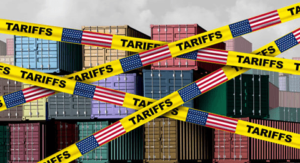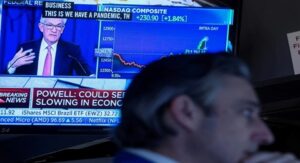
Global Political Turmoil & Economic Uncertainty
Global political turmoil in 2024 is poised to be a period of substantial political turbulence and economic uncertainty, as major economies navigate through pivotal elections and grapple with global challenges. The decisions made by governments, businesses, and households in the face of this uncertainty are expected to have far-reaching consequences for the world’s economic challenges.
Nations like China(super power), Germany, and the United Kingdom are particularly susceptible to the prevailing uncertainty, as highlighted by the recently published Economic Outlook 2023-25 by Allianz research organizations. The report underscores the potential negative impact on supply chains, prices, and overall economic activity, raising concerns about the repercussions of political indecision.
Compounding these challenges is the surge of populism, which, as historical data suggests, has correlated with a decline in GDP per capita and various adverse effects on governance indicators. As we delve deeper into the economic forecast for 2024, it becomes evident that the global community is standing at a critical juncture, with both opportunities and risks shaping the future.
Table of Contents
Global Political Turmoil
In 2024, global political turmoil is poised to create significant economic upheaval and instability. As countries representing 60% of the global GDP head to the polls, widespread uncertainty is delaying critical economic decisions.
The heightened political indecision, coupled with the rise of populism in over a quarter of the world’s nations, raises concerns about economic repercussions. In Europe, right-wing populism fueled by inflation and immigration issues threatens the composition of the upcoming European Parliament, potentially hindering progress in crucial areas like institutional reform and energy security.
Global Political Turmoil & Economic Uncertainty
1. Economic Landscape in the US
Despite facing economic headwinds and navigating global political turmoil, the United States appears to be on track for a ‘soft landing.’ With a 2.4% expansion in 2023, the country’s economy is expected to continue growing, albeit at a slower pace.
Robust household and corporate balance sheets, coupled with strategic financial maneuvers such as lengthening debt maturities and locking in low-interest rates, have provided a solid foundation. However, there are signs of strain, with consumer loan delinquencies rising and cyclical hiring experiencing a noticeable slowdown.
The Federal Reserve’s impending monetary tightening adds a layer of complexity to the economic outlook, highlighting the delicate balancing act required to sustain growth while mitigating risks.
2. Eurozone Challenges and Optimism
In contrast, the Eurozone is grappling with near-zero growth and is forecasted to briefly dip into a technical recession. However, amidst global political turmoil, Research maintains cautious optimism for a recovery in the latter half of 2024.
Easing monetary policies and reduced pressures from the energy crisis are expected to support this recovery. Potential risks, including a deeper recession, commercial real estate troubles, and geopolitical tensions, underscore the fragility of the Eurozone’s economic rebound.
As inflation relief and anticipated wage growth become key factors, the trajectory of consumer spending will play a pivotal role in determining the pace of recovery across the continent.
3. Global Disinflation and Central Bank Policies
A significant global disinflationary trend, coupled with ongoing global political turmoil, is influencing central bank policies. Driven by easing supply chain constraints and falling commodity prices, both the US and the Eurozone are witnessing a decline in inflation.
While central banks maintain a hawkish stance to avoid repeating past errors in inflation predictions, there is a possibility of policy shifts in the summer of 2024.
The Bank of England, European Central Bank, and Federal Reserve might implement modest rate cuts, signaling a critical juncture in the global economic recovery process as they seek to balance economic growth and inflation control.
4. Modest Recovery in Global Trade
Global trade, which contracted by about 0.4% year-on-year in 2023, is expected to experience a modest rebound in 2024. Led by European and Asian economies, a 3% increase in global trade volume is anticipated. Europe’s recovery, especially from critical countries like France, Germany, Italy, and the Netherlands, is expected to contribute significantly to this rebound.
However, amidst global political turmoil and the complex economic situation in China, marked by a downturn in the property sector and low consumer confidence, adds a layer of uncertainty to global trade dynamics. While export values and volumes are recovering, questions linger about the sustainability of China’s export strength.
5. Corporate Adaptation to Interest Rates
Corporations have adapted to the high-yield environment, with larger firms demonstrating greater resilience than their smaller counterparts. However, challenges persist, particularly in sectors like construction, real estate, renewable energy, and utilities amidst global political turmoil.
High leverage and considerable asset devaluations, especially in office and wind assets, pose significant hurdles. While widespread corporate defaults are not anticipated, weaker firms relying heavily on external financing face increasing challenges in 2024. The corporate landscape is a microcosm reflecting the broader economic uncertainties and the need for adaptability in the face of evolving financial conditions.
Bottom Line
As the world steps into 2024, it does so amidst a complex tapestry of political, economic, and social challenges, including global political turmoil. The interplay of factors such as political uncertainty, populism, monetary policy shifts, global trade dynamics, and corporate resilience will shape the trajectory of the global economy.
The delicate balance required to foster growth while navigating uncertainties underscores the need for strategic decision-making at both the national and corporate levels. The choices made in 2024 will not only determine short-term economic outcomes but will likely have a lasting impact on the resilience and adaptability of nations and businesses in an ever-evolving global landscape.





